(16426 products available)






























































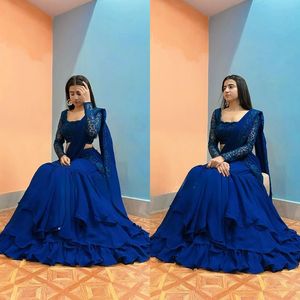

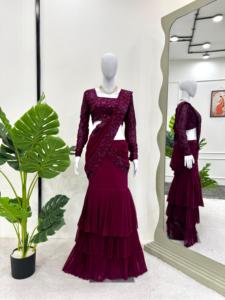
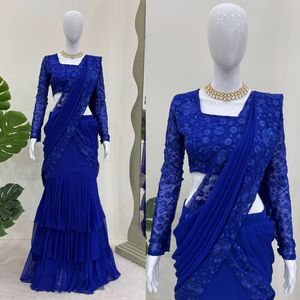
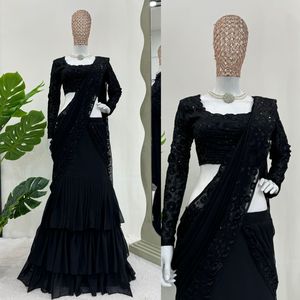








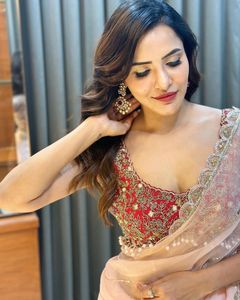
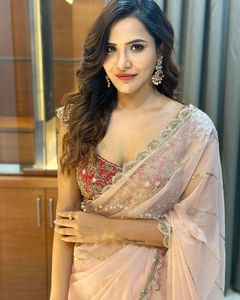
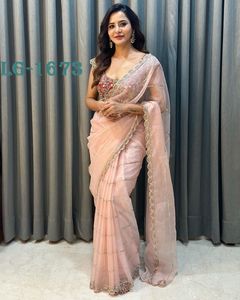
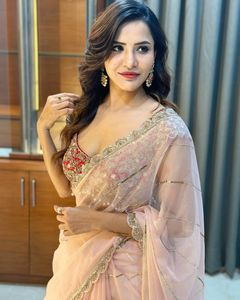































































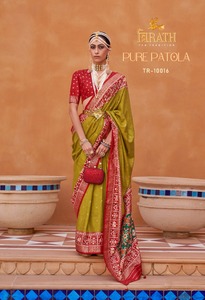
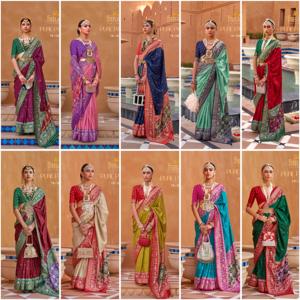


Sarees are a traditional attire among Indian women. They are long pieces of cloth that are about six to nine yards long. They come in different fabrics, colors, and patterns, and extend from the waist to the floor, with one end draped over the shoulder. Pricing a saree involves considering its type, material, age, and origin. Here are some types of sarees and their pricing considerations:
Sarees have a variety of designs, and each design incorporates its own unique artistry, patterns, and cultural significance. Here are some of the key design elements one will consider when looking to price this saree.
Handwoven Sarees
Handwoven sarees are prized for their craftsmanship and uniqueness. Each piece is individually crafted, often resulting in slight variations that add to their charm. Handloom sarees from regions like Varanasi (Banarasi sarees), Kanchipuram (Kanjeevaram sarees), and Murshidabad are known for their intricate weaves and designs. These sarees often showcase complex patterns like Buttis (small motifs), Jaal (network), and borders that are meticulously woven into the fabric.
Pricing a handwoven saree involves considering the labor-intensive process of weaving, the skill of the artisans, and the time taken to create each piece. The uniqueness and artisanal value of handwoven sarees contribute to their pricing in the market.
Printed Sarees
Printed sarees feature designs that are applied to the fabric using various printing techniques, including block printing, digital printing, and screen printing. These sarees can showcase a wide range of patterns, from floral and geometric motifs to abstract and contemporary designs. Printed sarees are versatile and suitable for everyday wear as well as casual occasions.
When pricing printed sarees, factors such as the complexity of the design, the printing technique used, and the quality of the fabric play a significant role. Digital and high-quality screen printing methods often result in more detailed and vibrant prints, which can affect the pricing.
Embroidered Sarees
Embroidered sarees are adorned with intricate needlework, featuring designs that range from subtle to elaborate. Common embroidery techniques used on sarees include Zardozi, Chikankari, Kantha, and Phulkari, each known for its distinct style and stitching method. Embroidered sarees are often chosen for festive and formal events due to their opulence and elegance.
Pricing an embroidered saree involves considering the type of embroidery, the complexity of the design, and the time required to complete the handiwork. Sarees with elaborate and high-quality embroidery typically command a higher price due to the skill and effort involved in their creation.
Pure Silk Sarees
Pure silk sarees are among the most luxurious and sought-after varieties. They are known for their rich texture, natural sheen, and drape. Silk sarees come in various types of silk, including Kanchipuram silk, Tussar silk, and Mysore silk, each with its unique characteristics and weaving style. Silk sarees are often worn for weddings, ceremonies, and special occasions due to their elegance and durability.
When pricing pure silk sarees, factors such as the quality of silk, the weaving technique, and the reputation of the silk-producing region are essential. High-quality silk sarees are valued for their softness, durability, and ability to hold intricate designs and patterns.
Net Sarees
Net sarees, also known as chiffon or georgette sarees, are lightweight and sheer fabrics that offer a modern and contemporary look. These sarees are often embellished with sequins, beads, or embroidery to add elegance and glamour. Net sarees are popular for parties, receptions, and evening events, providing a graceful and fluid drape.
Pricing net sarees involves considering the quality of the net fabric, the type of embellishments used, and the overall design complexity. The lightweight nature and versatility of net sarees make them a popular choice for various occasions.
Sarees are timeless garments that can be styled in numerous ways to suit different occasions and personal tastes. Here are some wearing and matching suggestions to help elevate one's saree styling:
Q1: What factors influence the pricing of sarees?
A1: Several factors affect the pricing of sarees, including fabric type, weaving technique, embroidery, border design, brand reputation, and origin. Specialties like handwoven sarees or those from specific regions tend to be more expensive.
Q2: Are there affordable options for traditional sarees?
A2: Yes, numerous traditional sarees like cotton and synthetic blend sarees offer an affordable yet authentic look. Exploring local markets and lesser-known brands can also reveal budget-friendly options.
Q3: How can one determine the quality of a saree?
A3: Quality sarees can be assessed by examining the fabric's texture, checking for consistent weaving, and evaluating the intricacy of embroidery or prints. Handwoven sarees typically offer superior quality compared to machine-made ones.
Q4: Do saree prices vary by region or country?
A4: Yes, saree prices can vary significantly by region and country. Factors like local demand, availability, and import costs influence pricing. Sarees from their origin regions are often more competitively priced.
Q5: Can one negotiate saree prices in local markets?
A5: Negotiating saree prices is often possible in local markets, especially in India. Buyers can negotiate prices by expressing interest in multiple items, being respectful and friendly, and using local language or phrases.